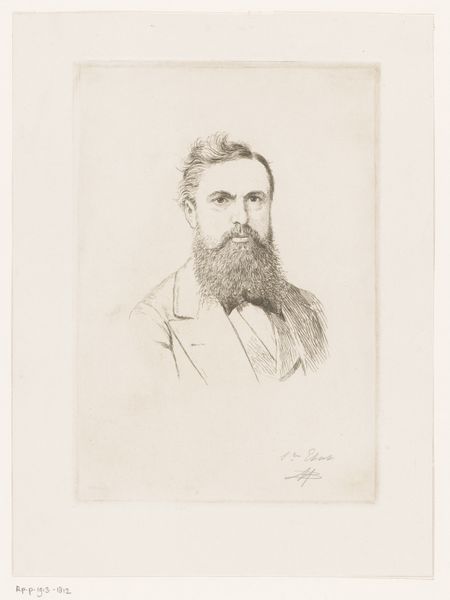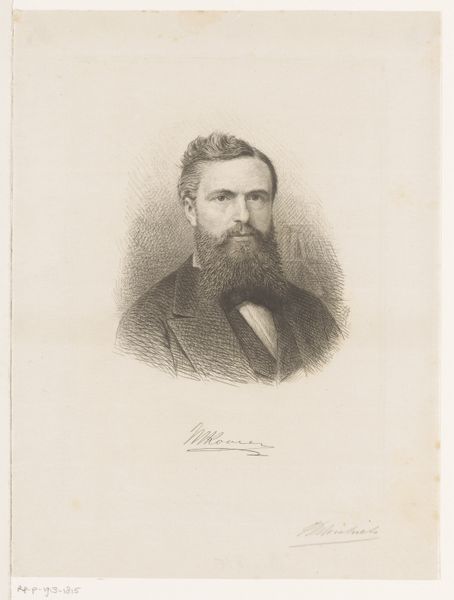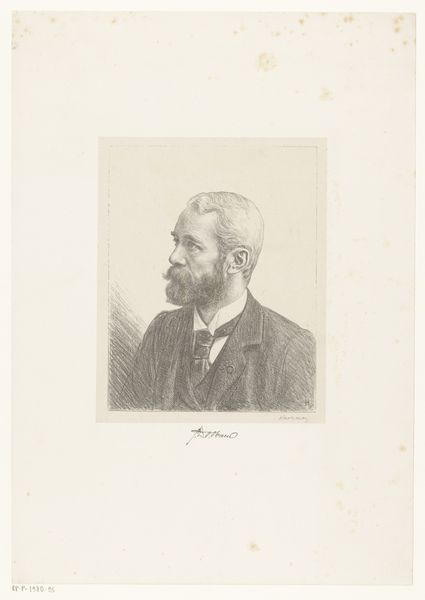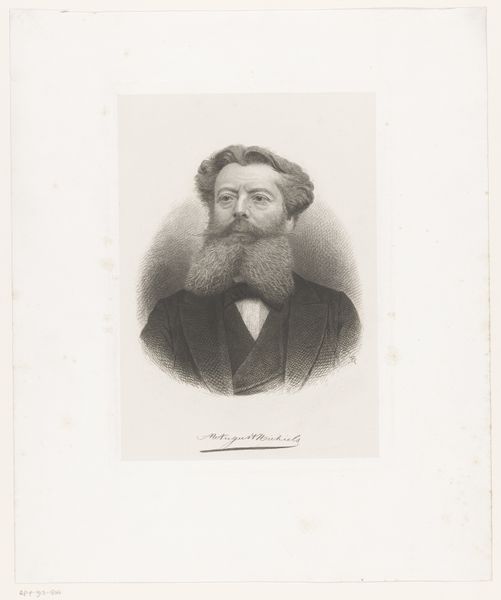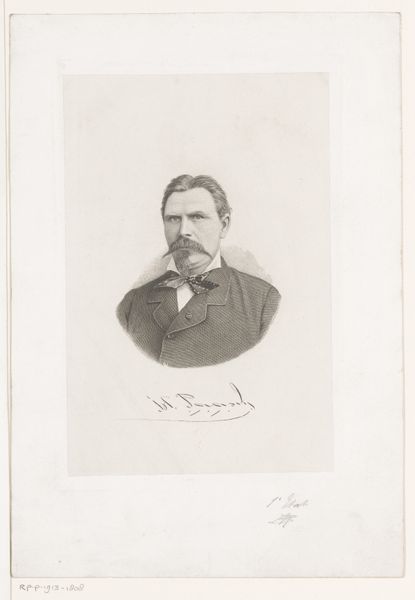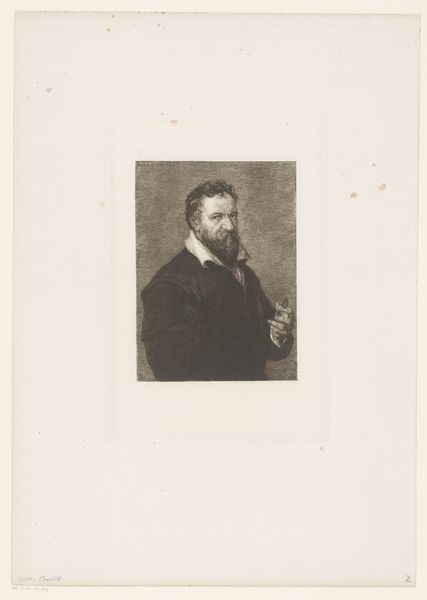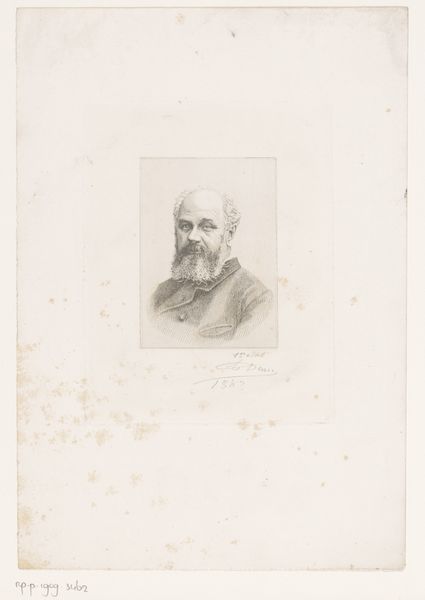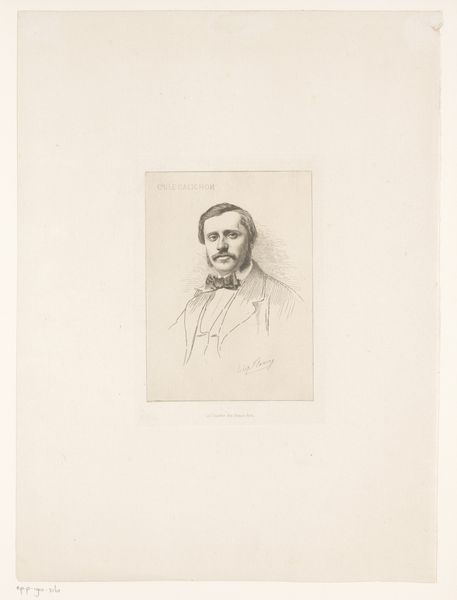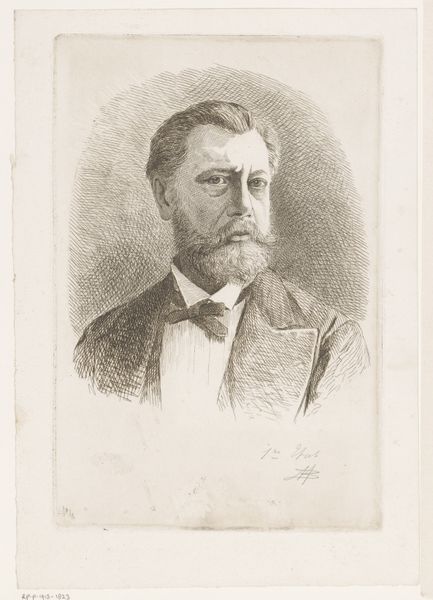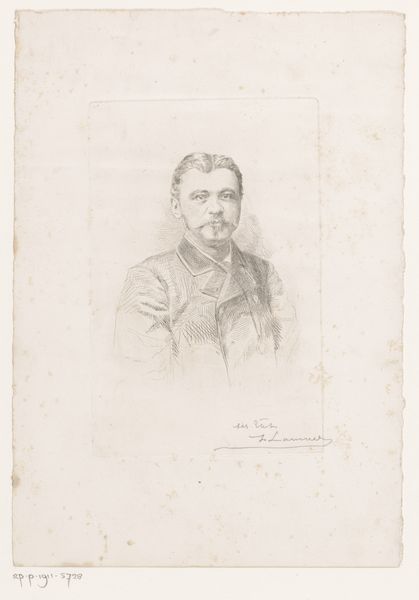
drawing, print, etching, graphite
#
portrait
#
drawing
# print
#
etching
#
charcoal drawing
#
pencil drawing
#
graphite
Dimensions: height 230 mm, width 160 mm
Copyright: Rijks Museum: Open Domain
Jean Baptiste Pierre Michiels made this portrait of Max Rooses using etching, a printmaking process with a fascinating history. In etching, the artist coats a metal plate with a waxy, acid-resistant substance, then scratches an image into the wax, exposing the metal. When the plate is dipped in acid, the exposed lines are eaten away, creating grooves. Ink is then applied to the plate, filling these grooves, and the surface is wiped clean. Finally, paper is pressed against the plate, transferring the ink and creating a print. The resulting image has a distinctive, linear quality, and its textures are defined by the artist’s hand. Consider the social context of this work. The rise of printmaking coincided with the development of capitalism. Etchings, like this portrait, could be reproduced and circulated widely, making art more accessible. Yet, the labor-intensive process also highlights the skilled work involved in creating each print, challenging any simple notion of mass production. By understanding the materials, making, and context, we can appreciate the full meaning of this etching, moving beyond traditional art history.
Comments
No comments
Be the first to comment and join the conversation on the ultimate creative platform.

